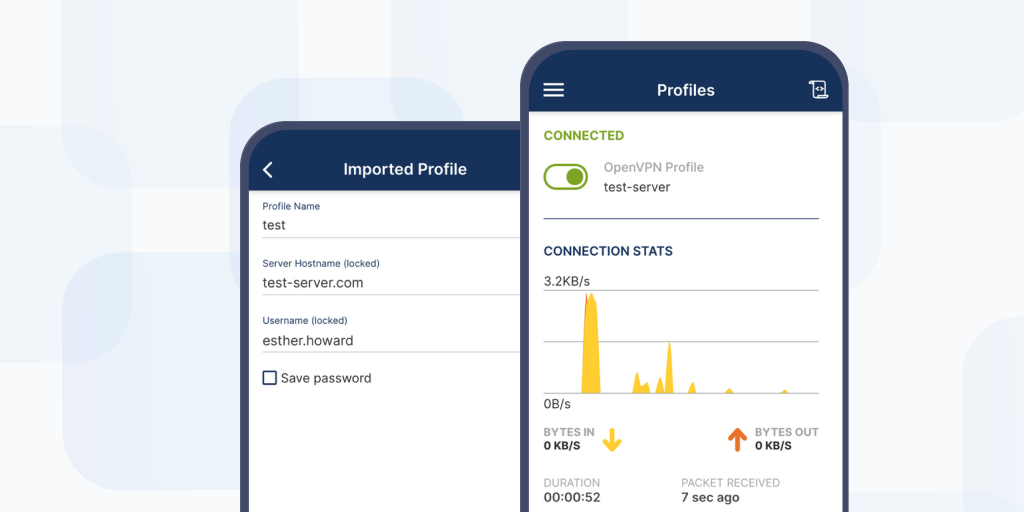Cloud Security Management: Pillars, Strategies & Benefits

By Heather Walters
As organizations accelerate their cloud adoption, IT teams face an urgent and ongoing challenge: how to effectively manage security across a complex, ever-expanding cloud environment.
Explore this content with AI:
ChatGPT | Perplexity | Claude | Google AI Mode | Grok
Cloud security management has evolved from a “nice to have” to a non-negotiable for small and mid-sized businesses (SMBs) trying to protect data, meet compliance standards, and operate efficiently — all without the resources of a large enterprise.
So what do IT managers need to know to stay ahead? In this article, we’ll break down the core pillars of cloud security management, explore key strategies (including how VPNs and CloudConnexa help), and offer an actionable framework to strengthen your cloud security posture.
Want to learn more about cloud security solutions?
What is cloud security management?
Cloud security management is the practice of protecting data, applications, and infrastructure hosted in the cloud through a combination of tools, policies, and procedures. It ensures that only authorized users can access resources, data is encrypted and monitored, threats are detected and responded to quickly, and regulatory compliance is maintained.
In short: it’s how IT teams secure their cloud environments, from identity controls to ongoing monitoring and data protection.
3 pillars of cloud security management
A solid cloud security management plan starts with a strong foundation — one built on clear, actionable principles that guide every security decision. At the heart of this foundation are three essential pillars: identity, access, and visibility.
Together, these elements serve as the core framework for any secure cloud strategy, helping IT teams ensure that only the right individuals have access to the right resources, at the right time — and that all actions are monitored and aligned with compliance requirements. Without this triad in place, even the most advanced cloud tools can fall short, leaving organizations vulnerable to threats, misconfigurations, or regulatory risks.
Identity
Knowing who is accessing your cloud environment — and verifying their identity — is essential. Identity management includes user authentication, role designations, and enforcing policies around credential usage.
Example: Using Zero Trust principles to ensure employees must pass MFA along with device posture, location, and device identity checks before accessing sensitive resources.
Access
Identity is only half the equation — managing what users can access is just as critical. Access controls ensure that users only interact with the data and services necessary for their role. Your marketing team does not need access to your code database, and your engineering team doesn't always need a list of client emails.
Example: Set up Access Control to ensure only specific groups are able to access certain information.
Visibility and compliance
Without visibility into cloud activity, threats can go unnoticed. And without alignment with compliance requirements, organizations risk costly penalties. Maintaining standards for compliance in your region or industry means safer data and more trust.
Example: Implementing cloud monitoring tools to log access attempts and identify anomalies, helping meet standards like GDPR or HIPAA.
Looking for help with the Access pillar of cloud security management?
Cloud security management strategy
Every SMB needs a strategy that addresses these pillars with tools tailored to their infrastructure. Below are three core focus areas — each with support from OpenVPN’s CloudConnexa platform.
Identity and Access Management (IAM)
The Problem: IT teams often struggle to enforce consistent identity policies across cloud services and hybrid environments.
Our Solution: CloudConnexa supports Zero Trust Network Access (ZTNA) principles by verifying user identity continuously — not just at login. This means granular controls for user access, multi-factor authentication, and location-based restrictions are all part of the solution. You can also rely on our Device Identity Verification Enforcement (DIVE) and Device Posture check as part of ZTNA.
Example Feature: IAM policies in CloudConnexa ensure users only reach approved applications and resources — no more over-privileged access.
Continuous monitoring and threat detection
The Problem: SMBs often lack 24/7 monitoring, making it hard to detect and respond to threats quickly.
Solution: CloudConnexa provides integrated monitoring features that give IT teams real-time visibility into network activity, connection patterns, and potential intrusions — helping teams spot unusual behavior fast. For example, Cyber Shield can help with IDS/IPS and domain filtering to prevent attack.
Example Feature: Real-time session logging and alerts that track VPN use and unauthorized access attempts.
Data protection and encryption
The Problem: Sensitive data can be exposed if it’s not encrypted properly during transit or storage.
Our Solution: OpenVPN uses robust encryption protocols (like AES-256) to protect data in transit, and CloudConnexa creates a secure, encrypted tunnel for all traffic between users and cloud services.
Example Feature: Encrypted tunnels for all traffic routed through OpenVPN, including access to private cloud environments.
Forming a cloud security assessment process
A strong assessment process helps IT managers evaluate and improve their current security measures. Here’s how to build one:
- Assemble the right teams: Include stakeholders from cloud engineering, DevOps, security operations, and IT infrastructure.
- Map your environment: Document your cloud architecture patterns, deployment models, and operational practices.
- Audit your DevOps pipeline: Understand how workloads are created, managed, and updated. Look at CI/CD practices, container use, and image security.
- Inventory your tools: List cloud-native and third-party tools like CSPM, observability platforms, package managers, and workload runtime protection.
- Start simple: Begin your assessment with familiar environments — VMs and containers — before tackling more complex setups.
- Prioritize IAM: Focus early on access keys, remote access methods (like SSH), and role-based access controls across environments.
Benefits of cloud security management
Implementing a comprehensive cloud security strategy yields clear, measurable benefits for small and mid-sized businesses. One of the most critical advantages is enhanced data protection — ensuring that sensitive information is safeguarded against unauthorized access. As organizations grow, dynamic scalability becomes essential, allowing IT teams to apply consistent security policies across expanding cloud environments without adding unnecessary complexity.
Effective cloud security management also enables improved monitoring and threat detection, equipping businesses with real-time insights to detect and respond to threats before they escalate. Additionally, a well-designed strategy simplifies compliance with regulations like GDPR and HIPAA, reducing risk and saving valuable resources. Perhaps most importantly for resource-constrained SMBs, cloud security solutions deliver cost-effectiveness by minimizing the likelihood and financial impact of security incidents while streamlining day-to-day operations.
OpenVPN helps SMBs tackle these challenges head-on. With tools like CloudConnexa and support for Private IAAS access, businesses get proactive security, simplified access control, and full visibility across their cloud resources.
Common challenges of cloud security management
Despite its advantages, cloud security management comes with obstacles — especially for resource-constrained SMBs. One of the most pressing cloud security challenges is navigating compliance complexity. With data privacy regulations constantly evolving, many businesses lack the dedicated compliance teams needed to keep up, leading to confusion and potential legal exposure.
Compounding this issue is the shared responsibility model inherent in cloud services — without a clear understanding of which party is accountable for specific security measures, critical gaps can emerge.
Limited visibility across multi-cloud and hybrid environments further exacerbates the problem, as IT teams may struggle to track user behavior or detect anomalies in real time. Access control gaps, such as inconsistent identity enforcement or weak credential practices, leave systems vulnerable to breaches. Lastly, many SMBs operate in hybrid infrastructures that combine cloud and on-prem systems, complicating the task of securing assets consistently across all platforms.
These challenges underscore the need for centralized, streamlined security tools and strategies.
Frequently Asked Questions on Cloud Security Management
Why is security management in the cloud important?
Failing to take ownership of cloud security can lead to data loss, system breaches, and costly attacks. A breach doesn’t just impact systems — it can damage customer trust and cost millions in damages.
What are the 4 areas of cloud security?
Cloud security includes visibility and compliance, compute-based security, network protections, and identity and access management. Visibility and compliance ensure that organizations can continuously monitor their cloud environments and adhere to data privacy regulations. Compute-based security focuses on protecting workloads like virtual machines and containers. Network protections are responsible for securing data as it moves between services and users, while identity and access management governs who can access what and ensures proper authorization protocols are in place.
What are the three pillars of cloud security?
The foundational pillars are Identity, Access, and Visibility — each critical to creating a secure cloud infrastructure. Identity ensures that users are who they say they are through robust authentication mechanisms. Access involves granting the appropriate level of permissions to those users, ensuring they can only reach the resources they need. Visibility refers to the ability to monitor cloud operations in real time and maintain compliance with internal policies and regulatory requirements.
What are the three categories of cloud security?
Cloud security spans three categories: provider-based, customer-based, and service-based. Provider-based security refers to the protections implemented by cloud service providers at the infrastructure and platform level. Customer-based security includes the tools and practices that customers must manage themselves, such as access controls and encryption. Service-based security is shared across applications and services used within the cloud and involves both provider and customer responsibilities to ensure safe and secure functionality.
Ready to take control of your cloud security?
Explore CloudConnexa to learn how OpenVPN can help you secure your cloud environment with flexible, scalable solutions — built for teams just like yours.
Ready to see how OpenVPN can help protect your organization from attacks?
Try self-hosted Access Server or managed CloudConnexa for free - no credit card required.
See Which One is Right for YouHeather is a writer for OpenVPN.


